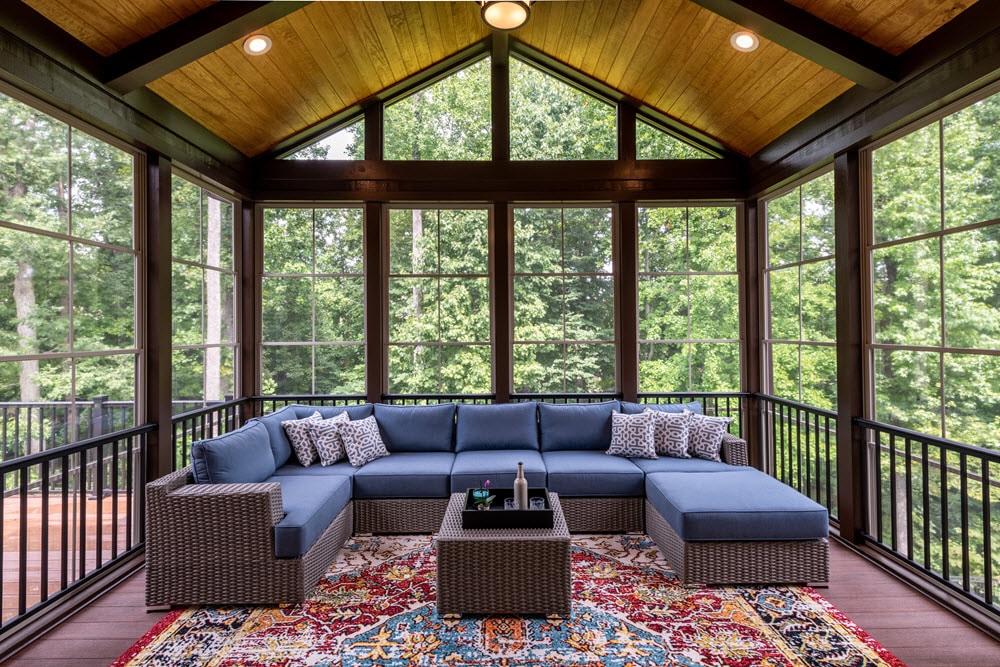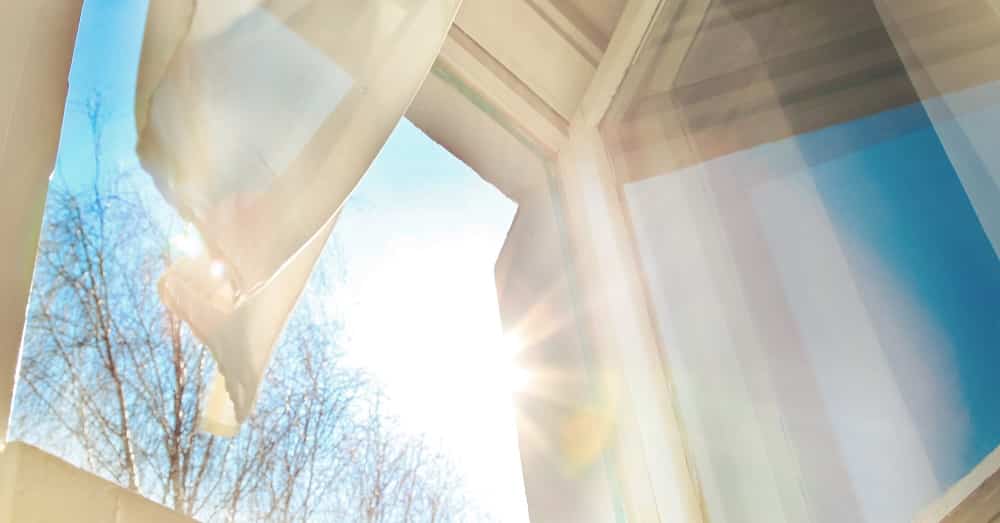Over the years, home windows have transitioned from being purely functional elements to becoming integral features in modern home design. In this article, we will explore the development of residential window design, the latest trends in modern window aesthetics, and the advancements in window technology that have transformed the way we view and experience our windows.
From their humble functional origins, where their primary purpose was to provide natural light, ventilation, and protection from the elements, home windows have evolved into architectural statements that enhance the overall aesthetics of a house. The design possibilities for home windows are now vast, with various window styles, such as casement, double-hung, and picture windows, contributing to the visual appeal of homes.
Today, windows not only serve their functional purpose but also play a crucial role in defining the look and feel of a home. Expansive, floor-to-ceiling windows seamlessly connect indoor and outdoor spaces, blurring the lines between the two. Unique shapes and designs add visual interest and become focal points that elevate the architectural design of a house.
The Functional Origins of Home Windows
When you look at the windows in your home, it’s easy to forget that they were once purely functional elements. In the early days, windows were primarily designed to fulfill three essential purposes: providing natural light, ventilation, and protection from the elements.
One of the oldest materials used for windows was glass, a delicate material that posed significant challenges in terms of durability and affordability. Initially, small glass panes were used, held together by lead strips known as cames. These early forms of windows were simple, with small openings that allowed limited light to enter the room.
As architectural techniques advanced, window designs also evolved. In the Middle Ages, timber frames became popular, allowing for larger windows with multiple smaller panes of glass held together by mullions and transoms. These designs not only increased the amount of natural light coming in but also provided better protection from the elements thanks to their improved sealing capabilities.
Throughout the centuries, windows continued to undergo advancements. The introduction of sash windows in the 17th century revolutionized window functionality by allowing for easier operation and enhanced ventilation. The Industrial Revolution brought about the mass production of windows, making them more affordable and accessible to a wider population.
Over time, home windows developed from basic structures with specific functions into integral features of residential architecture. From their humble beginnings, windows have evolved to play a significant role in enhancing the aesthetics of both the interior and exterior of homes. The combination of improved materials, innovative designs, and advancements in technology have transformed windows from mere functional elements to statements of style and sophistication.
As we journey through the history of home windows, we will explore the various factors that have shaped their development. From the functionality-focused origins to their seamless integration with modern home design, we will uncover the fascinating evolution that has led us to the diverse and visually stunning windows we see today.
Shaping Window Design: From Functionality to Aesthetics
In the evolution of home windows, there has been a significant shift from purely functional elements to incorporating them as key design features in residential architecture. This transformation has led to the emergence of various window styles that not only provide practical benefits but also contribute to the overall aesthetic appeal of a home.
One notable trend in residential window design is the use of casement windows. These windows are hinged at the sides and open outward, allowing for maximum ventilation and unobstructed views. Casement windows are known for their sleek, modern look, making them a popular choice in contemporary home designs.
Another popular window style is the double-hung window, which consists of two vertically sliding sashes. This classic window design not only allows for efficient airflow but also adds a touch of timeless elegance to traditional and transitional homes.
Picture windows have also gained popularity in modern window aesthetics. These large, fixed windows are designed to capture breathtaking views and flood interior spaces with natural light. Picture windows are often used as focal points, creating a seamless connection between the indoors and outdoors.
The Role of Window Styles in Architectural Design
The choice of window style significantly influences the architectural design of a house. It can accentuate certain architectural elements, create visual symmetry, or add a unique character to the overall facade. Whether it’s a sleek modern home with floor-to-ceiling windows or a charming craftsman-style house with divided-light windows, each window style contributes to the home’s architectural identity.
Additionally, advancements in manufacturing techniques have expanded the options for customizing window designs. Homeowners now have the freedom to choose unique shapes, custom grille patterns, and energy-efficient glass options to suit their personal preferences and complement the overall architectural style.
Advancements in Window Technology
In recent years, there have been significant advancements in window technology that have revolutionized the way we think about and design windows. These advancements not only enhance the functionality and efficiency of our windows but also contribute to the overall aesthetics of our homes. Let’s explore some of the remarkable developments in window technology:
Energy-Efficient Window Materials
One of the major breakthroughs in window technology is the introduction of energy-efficient window materials. Insulated glass, also known as double-pane or triple-pane glass, helps to reduce heat transfer and prevent energy loss.
Another notable innovation is the use of low-emissivity (Low-E) coatings on window glass. These coatings allow visible light to pass through while reflecting heat, helping to keep our homes cooler in the summer and warmer in the winter.
Double-Glazing and Window Tinting
Double-glazing, which involves the use of two glass panes separated by a layer of gas, provides extra insulation and soundproofing for windows. This technology not only improves energy efficiency but also enhances indoor comfort by reducing outside noise.
Window tinting is another advancement that offers multiple benefits. It helps to block harmful UV rays, reduces glare, and provides privacy without sacrificing natural light. Window tinting can be applied to both residential and commercial windows, offering a versatile solution for various needs.
Integration of Smart Technology
The integration of smart technology in windows has transformed the way we interact with our windows and control our indoor environment. Automated controls, such as motorized window shades and blinds, allow for convenient adjustment of natural light and privacy settings.
Sensors that detect temperature, humidity, and sunlight can automatically adjust window openings and shades to optimize energy efficiency and comfort. This technology not only simplifies our daily routines but also contributes to energy savings and a more sustainable lifestyle.
These advancements in window technology have transformed windows from mere functional elements to significant design features in modern homes. With improved energy efficiency, enhanced comfort, and seamless integration of smart controls, windows play a pivotal role in shaping the overall aesthetics and functionality of residential spaces.
The Rise of Windows as Design Features
In modern homes, windows have evolved beyond their functional role to become key design features. Homeowners and architects alike are recognizing the importance of windows in creating a visually appealing and cohesive living space. The evolution of home windows from mere functionality to prominent design elements has transformed the way we view and appreciate these architectural features.
One notable trend is the use of large, expansive windows that blur the boundaries between indoor and outdoor spaces. These floor-to-ceiling windows not only flood interiors with natural light but also offer breathtaking views of the surrounding landscape. They create a seamless connection with nature, providing a sense of openness and serenity within the home.
To add visual interest and aesthetic appeal, unique shapes and designs are being incorporated into window architecture. Curved windows, triangular windows, and circular windows are just a few examples of the diverse range of shapes that are being embraced by contemporary home designs. These unconventional window designs not only serve as eye-catching focal points but also enhance the overall architectural aesthetic of a home.
Beyond their functional and aesthetic qualities, windows also contribute to the energy efficiency of a home. Advancements in window technology have led to the development of energy-efficient window materials such as insulated glass and low-emissivity coatings. These innovations not only improve insulation but also reduce energy consumption, making them sustainable choices for modern homes.
As the evolution of home windows continues, we can expect to see even more innovative designs and technological advancements. From smart windows with built-in sensors to self-tinting glass that adapts to external lighting conditions, the future of windows is a fascinating blend of aesthetics and cutting-edge technology.
Conclusion
The evolution of home windows from mere functional elements to defining features of modern home design has been remarkable. Throughout history, residential window design has seen significant development, incorporating both functionality and aesthetics to enhance the overall look and feel of our living spaces. With ongoing developments in window technology and aesthetics, we can expect to see even more innovative and visually striking window designs in the years to come.
FAQ
What is the evolution of home windows: from function to feature?
The evolution of home windows refers to the transformation of windows from purely functional elements to becoming prominent design features in homes. Over the years, home windows have gone beyond their basic purpose of providing natural light, ventilation, and protection from the elements, and have become integral to the overall aesthetics and architectural design of a house.
How has residential window design developed over time?
Residential window design has evolved significantly over time. Initially, windows were simple openings in walls, often covered with animal hide or other basic materials. As architecture advanced, various window styles emerged, including casement, double-hung, and picture windows. These styles not only served functional purposes but also contributed to the overall visual appeal and character of a home.
What are the modern window trends in terms of aesthetics?
In modern window design, there is a growing trend towards using large, expansive windows to create a seamless connection between indoor and outdoor spaces. Additionally, unique shapes, such as circular or triangular windows, are being incorporated to add visual interest and architectural flair to homes. Window frames are also being designed to complement and enhance the overall exterior and interior aesthetics of a house.
What are some advancements in window technology?
Window technology has seen significant advancements in recent years. Energy-efficient window materials, such as insulated glass and low-emissivity coatings, help to minimize heat transfer and reduce energy consumption. Features like double-glazing and window tinting further enhance energy efficiency and provide added insulation. Smart technology integration allows for automated controls, sensors, and remote operation, enhancing convenience and functionality.
How have windows become prominent design features in modern homes?
Windows has become a prominent design feature in modern homes by seamlessly merging indoor and outdoor spaces. Expansive windows offer panoramic views and flood interiors with natural light, creating a sense of openness. The incorporation of unique window designs and shapes adds architectural interest and helps to define the overall aesthetic of a house, making windows a central feature in modern home design.



